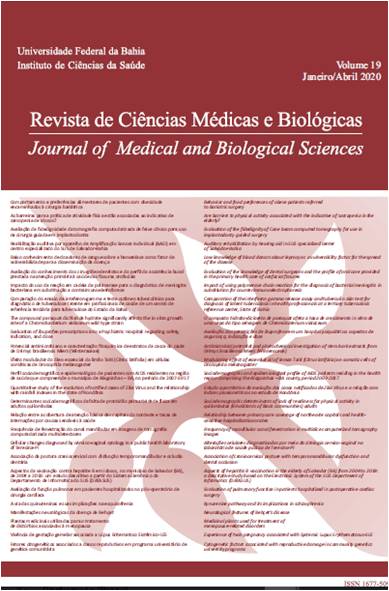Coronavirus disease 2019 (covid-19) and rheumatic diseases
DOI:
https://doi.org/10.9771/cmbio.v19i1.36903Resumo
At the end of December 2019, a new viral infection never before described appeared in the city of Wuhan, Hubei province, China, leading to a percentage of cases of severe respiratory failure. It was very quickly investigated and its etiological agent was discovered, being a new betacoronavirus, called Severe Acute Respiratory Coronavirus 2 Syndrome (SARS-Cov 2), to differentiate it from the SARS-Cov, reported in the period from 2000 to 2004, and another similar disease also caused by coronavirus, after ten years - Middle East Respiratory Syndrome Coronavirus (MERS-Cov). The disease caused by the virus came to be called Coronavirus Disease 2019 (Covid-19). After leaving China, this disease spread to several countries in the world, culminating in March, when the World Health Organization (WHO) declared a state of pandemic (1). The coronavirus is characterized by presenting RNA with a single helix and on its viral surface presents, to electron microscope, a structure that look like a crown, hence the name corona. A probable mutation happened from wild sources, which could be the origin of bats or snakes. Eating meat from the wild animal market, a tradition in China, was once again responsible for a major epidemic (1).
Downloads
Downloads
Publicado
Como Citar
Edição
Seção
Licença
A Revista de Ciências Médicas e Biológicas reserva-se todos os direitos autorais dos trabalhos publicados, inclusive de tradução, permitindo, entretanto, a sua posterior reprodução como transcrição, com a devida citação de fonte. O periódico tem acesso livre e gratuito.






